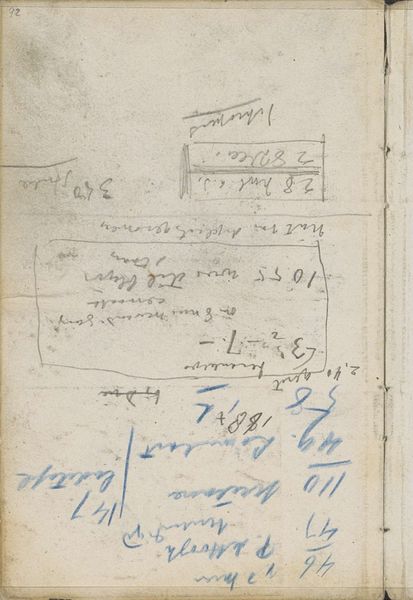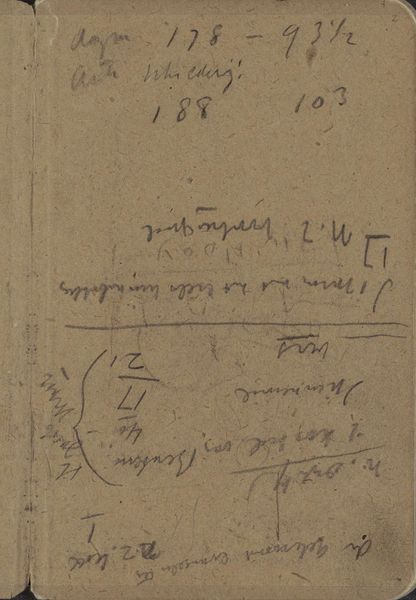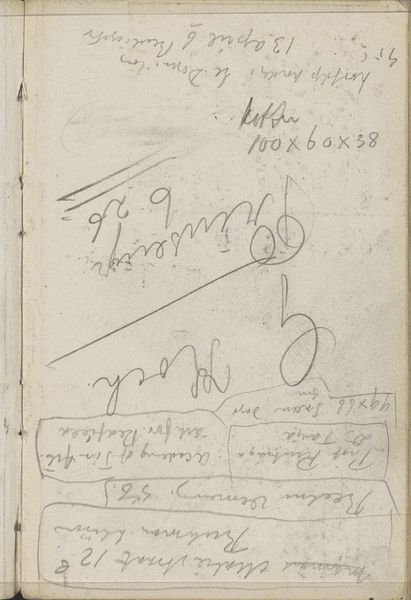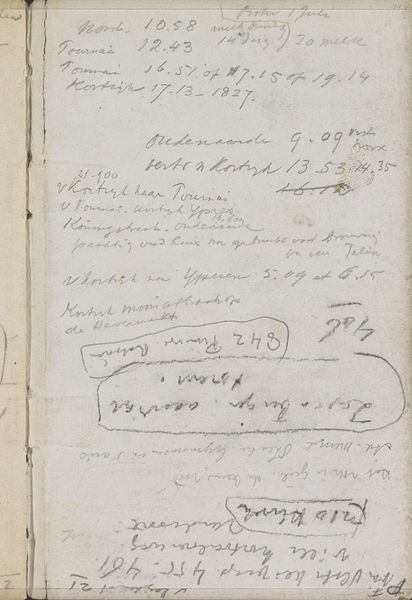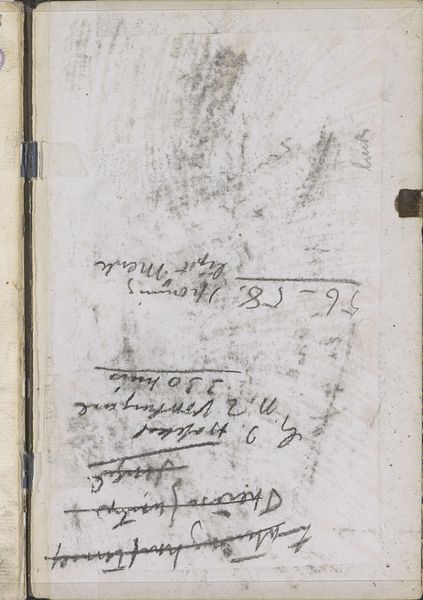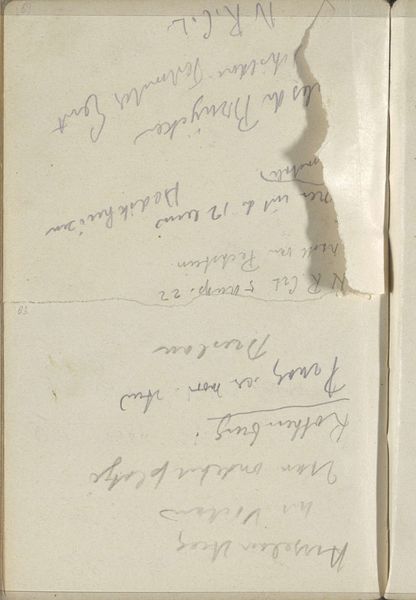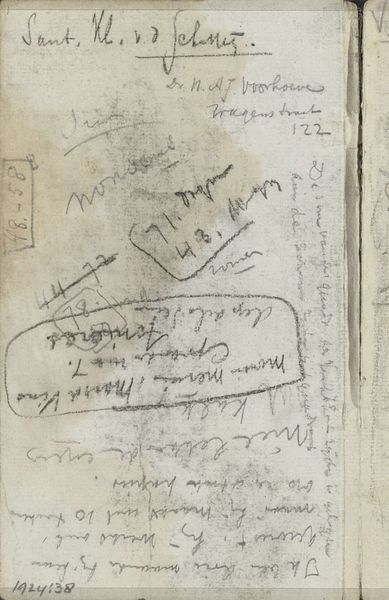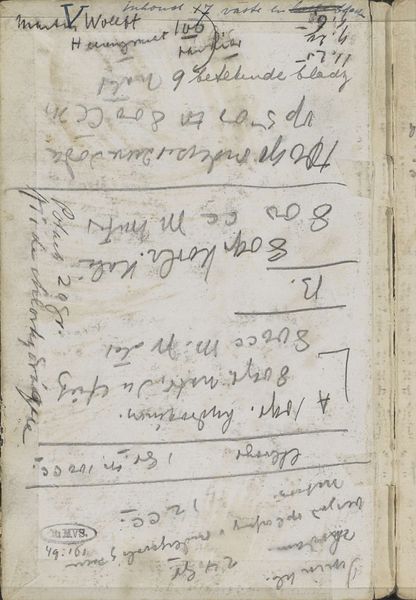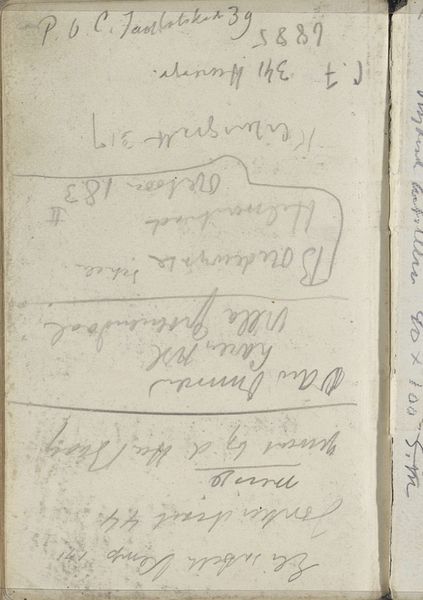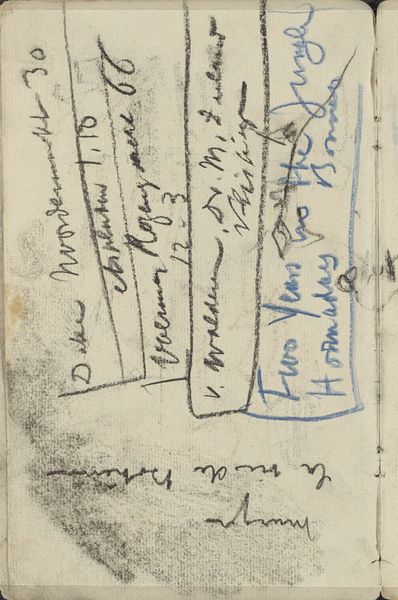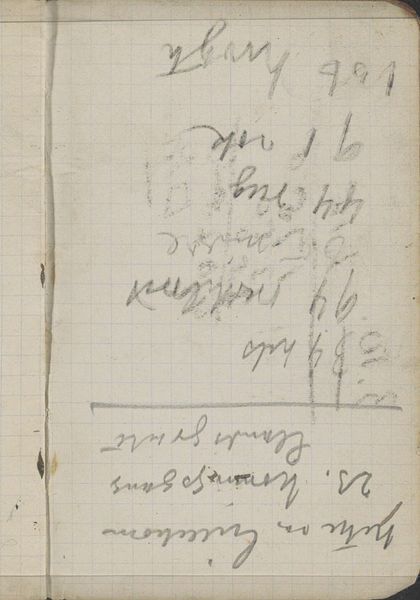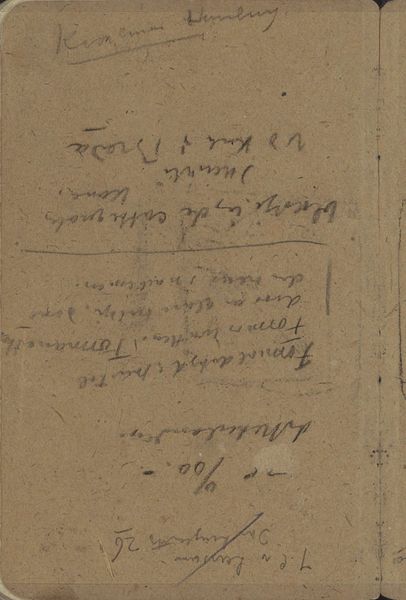
drawing, paper, ink
#
drawing
#
paper
#
ink
#
monochrome
Copyright: Rijks Museum: Open Domain
Curator: Here we have "Studie en annotaties" a sketchbook page dating from between 1896 and 1901, by George Hendrik Breitner, held here at the Rijksmuseum. The monochrome drawing, rendered in ink on paper, is covered with script and abstract marks. What is your initial reaction? Editor: It's almost like eavesdropping on the artist's inner monologue. There’s a restless energy in the layered writing. It gives the sense of being a palimpsest of the artist’s thought processes, with personal jottings of phone numbers or dates alongside cryptic shorthand. I want to dig beneath the surface. Curator: Indeed, a palimpsest it is! For me, this sketch is fascinating. Breitner's interest in street scenes, and his practice of taking photographs as source material for his paintings and drawings, resonates even in this page of writing. One can almost reconstruct his creative routines—these are private symbolic notations within a commercial, increasingly image-saturated context. Editor: And it makes me wonder about accessibility and exclusion. Who was the intended audience of these codes? Are they remnants of a colonial administrative structure or personal identifiers used by those negotiating the complexities of the early-industrial urban landscape? We are outsiders invited to decipher—or to consider who can not access such meaning. Curator: Precisely! Even now, so much is veiled by their intimacy. But this in turn reveals the inherent ambiguity and complexity behind the simplest lines of a street scene. One senses Breitner grappling with both the weight and fragility of transient life—seeking truth or purity in the mundane and anonymous. The monochrome palette underscores that reduction. Editor: Yes, and I think your observations help make me understand why he appeals to me on an emotional level—a feeling of intimacy, in how ordinary moments can gain significance. Ultimately this sheet stands as a metaphor of time and social existence—revealing through both its visible markings and concealed spaces a story far more expansive than it first appears. Curator: It serves as an archive—each inscription marks layers that testify to not only how an image comes to life, but how perception is cultivated as an active participation within a culture—across both surface and interior dimensions of experience.
Comments
No comments
Be the first to comment and join the conversation on the ultimate creative platform.
